The design of our living spaces significantly affects our emotions; every choice of colour, material or style influences our mood.
In fact, there’s a name for it – neuro-architecture. This is the study of how the body and brain respond to the built environment. In interiors, it’s how you apply shapes, colours and textures in the context of each room. There’s a link between interior design and mental health; understanding the connection can make our homes a whole lot happier.
If you suffer from seasonal affective disorder (SAD) or experience low mood from time to time, here are some décor tips to transform your home into a happy, healthy sanctuary.
Dynamic displays of wildlife
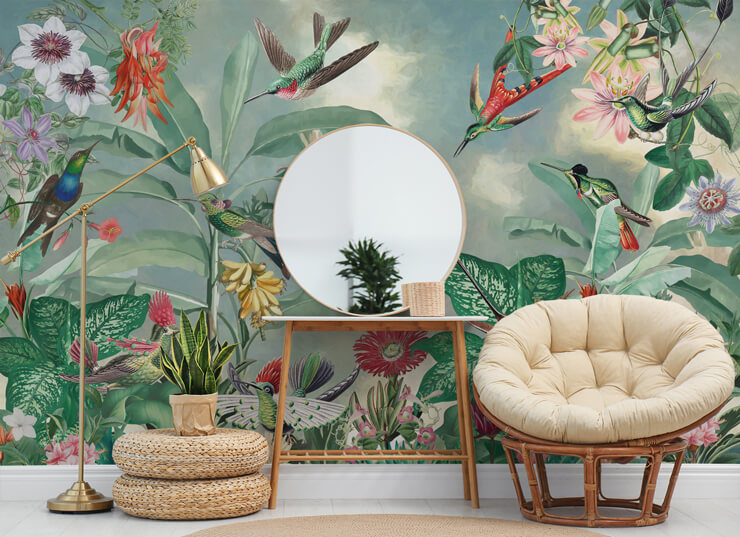
Mural in photo: Birds of Paradise
One of the easiest ways to lift your mood with interior design is by injecting a sense of life into your home. Displays of animals and living things can re-establish a feeling of purpose and forge a connection with the outside world…even when you’re stuck indoors!
The best way to get ‘unstuck’ is to bring the outside wilderness inside. We should never feel confined by our homes. Instead, our humble abodes can be a place of escapism as much as a trip to the park.
This tropical Birds of Paradise wallpaper is the perfect example of how exotic wildlife displays can make us feel rejuvenated, alive and free.
Happy, mood-enhancing wall colours
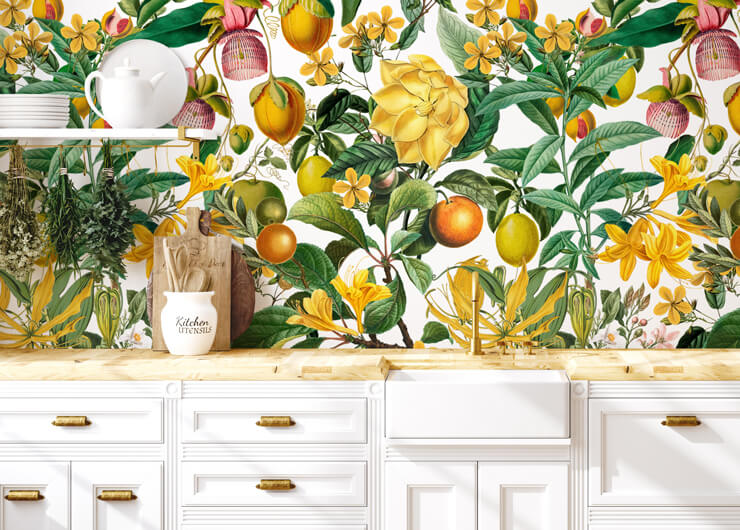
Mural in photo: Yellow Fruit and Flower
When choosing the right wallpaper colour, there’s much to consider. Are you easily stressed or dealing with anxiety? Calming hues such as pale blues, pastel pinks and soft greens could help to soothe you.
If your mood is low, vibrant and bright colours can do the trick. Colour psychology shows that yellow, orange and red can increase energy levels as well as feelings of happiness and optimism. Of course, they need to be harnessed correctly and used in moderation. A small room enveloped in red can be too much to deal with, and a yellow which is too harsh will only lead to headaches.
Something bright yet gentle like this Yellow Fruit and Flower wallpaper makes a great feature wall. If in doubt, coordinate with neutralising creams and off-white hues for light-reflecting balance.
Houseplants, houseplants, houseplants

If there’s one thing you can never have enough of, it’s houseplants. Not only are these beautiful creations of nature a joy to look at, but they’re an important part of the basic human drive – to nurture and be nurtured. Potted plants do exactly that. They need us to keep them pruned and watered, and in return, they purify our air and remove all those nasty toxins.
It’s a relationship that never stops giving, and it’s the perfect way to combine interior design and mental health. But you don’t have to stick with live plants if you have allergies or pets that are a little too curious. Faux and dried plants are set to be a huge interior trend, and they can add life and soul to your home in a similar way.
There’s nothing stopping you from creating an indoor garden with jungle-themed wallpaper. Botanicals are everywhere right now, and where better than our walls to create a stylishly on-trend shrine to Mother Nature?
Gentle geometric patterns

Mural in photo: Harmonic Waves
According to neuro-architecture, there are five pillars of home design. One relates to learning and memory, and shapes can directly impact how we absorb information. Patterns can be stimulating, soothing and intriguing, but gentle geometry is best for creating a relaxing space.
Pattern recognition is imperative to learning, and repetition feeds the human need for order. That’s why prints and patterns are loved across all of life’s essential subcultures. Whether you’re addicted to prints on the catwalk or can’t get enough of the latest wallpaper patterns, geos are a great way to celebrate stability, harmony and symmetry.
Rounded furniture with smooth edges

In the same way that gentle geometric wallpaper patterns can bring uniformity and calm, furniture with soft-looking edges (rather than harsh squared-off edges) can help us feel comfortable. Our brains are conditioned to deem sharp objects as harmful. In real life, we see this in practice every day (think cautious mothers baby-proofing furniture corners).
So if you’re wondering why an elliptical chair with rounded wooden legs makes you smile, it’s your natural instincts at play. Rounded furniture gives off friendly and approachable vibes, and curves are pleasing to the eye.
Colourful artwork and murals

Mural in photo: Goten Yama Hill Shinagawa
It’s been a long time coming, but the healing power of art has finally been documented. Brain research (including from the likes of Harvard and Mayo Clinic) now confirms that the arts positively affect mental wellbeing. So if you love a painting or two, don’t hold back with your home gallery.
Movement is just as important, though. This is because a change in environment can help to improve your mood. So, keeping your décor from becoming stagnant is the key to aligning good mental health and interior design practice. Switching up your art prints or installing a fine art mural could make you feel like a new person.
While we have a full library of classical art, a trend to watch is oriental art, with stunning murals like the Goten Yama Hill Shinagawa being all the rage.
Your favourite books and trinkets

If you want to feel happy at home, you have to make it yours. A personal space should have all the things that make you smile. Books that you love to read over and over again, souvenirs (stylish ones) picked up from your travels, photographs of loved ones, and decorative items that make your heart sing.
Of course, there does need to be a balance of ‘things’ and clutter. So curate your items with care. Poet and textile designer William Morris once said: “Have nothing in your house that you do not know to be useful or believe to be beautiful.” So if it’s neither of those things, it probably doesn’t deserve to be on display.
For an effortless bookcase effect that doesn’t take up valuable space in your home, please take a look at our bookcase wallpaper collection.
We hope you enjoyed our post on home interior design and mental health! Let us know in the comments what type of décor keeps you happy and healthy. And don’t forget to share this with anyone you know who may find neuro-architecture and mood-lifting design tips helpful…





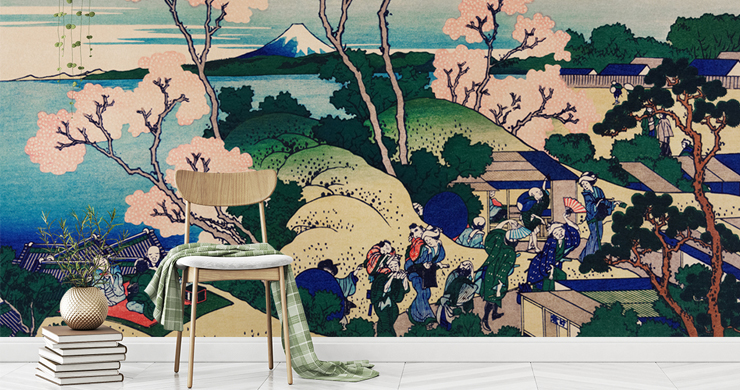
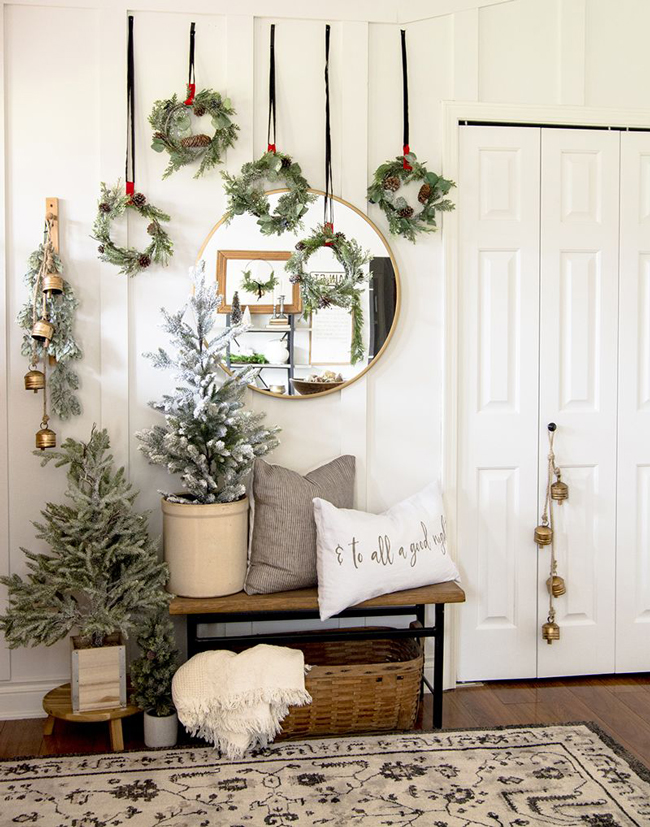
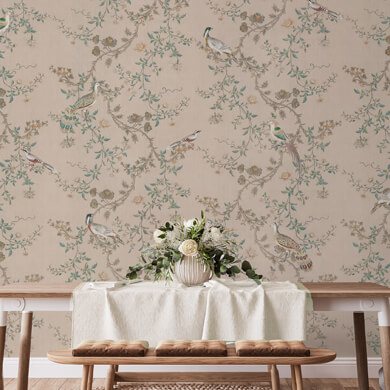
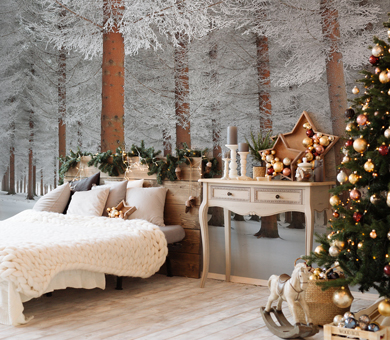
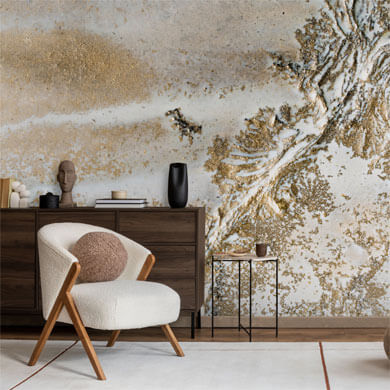
Latest Social